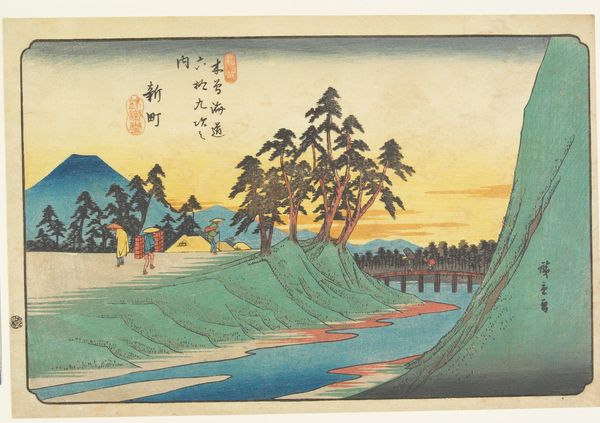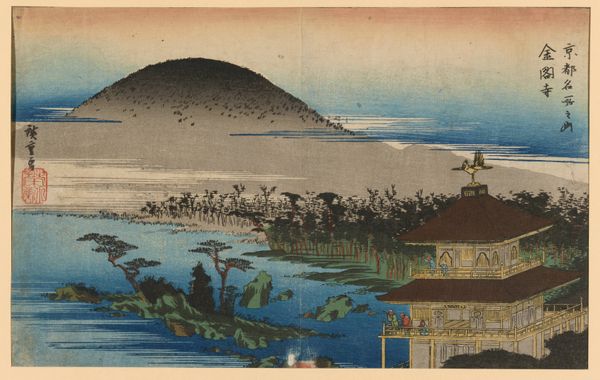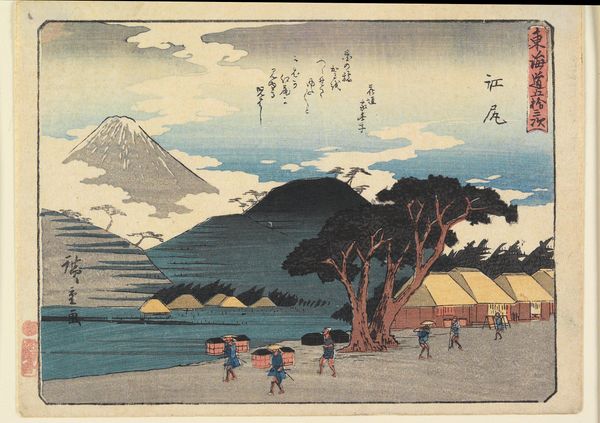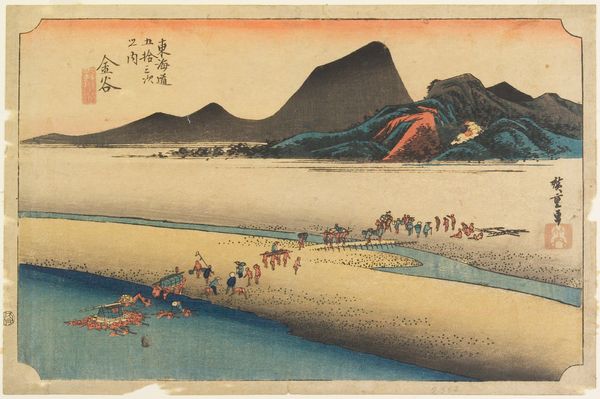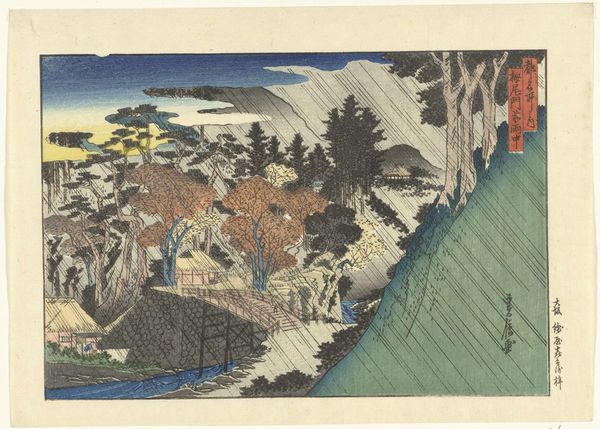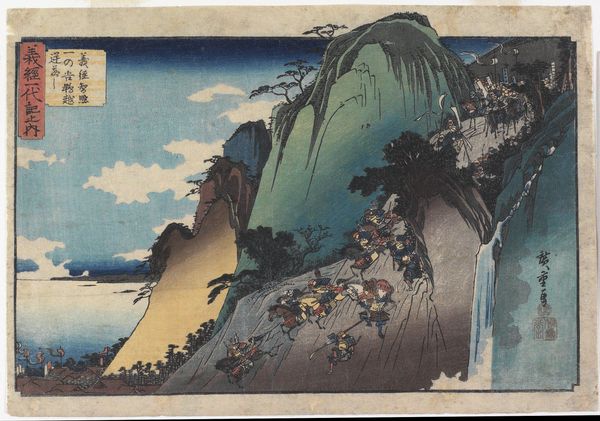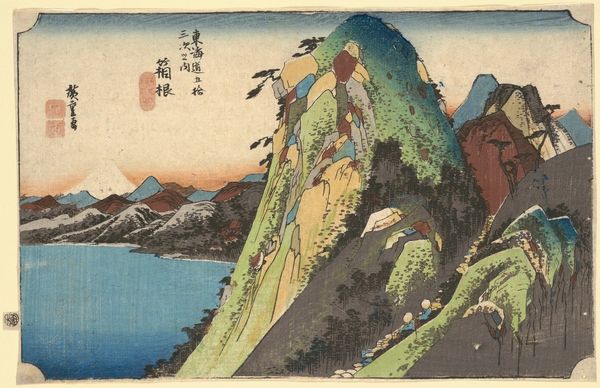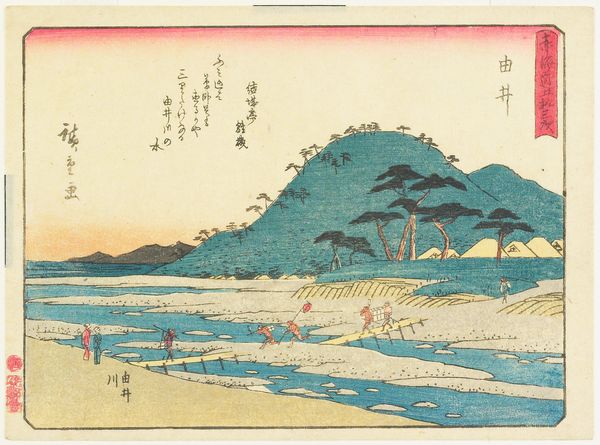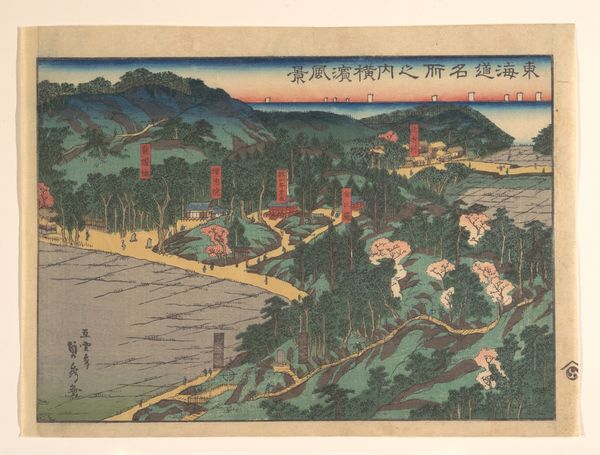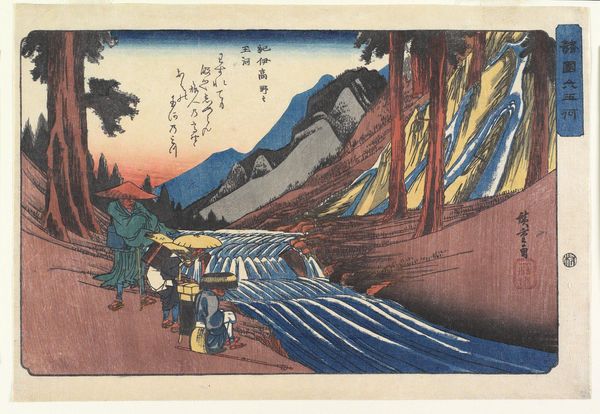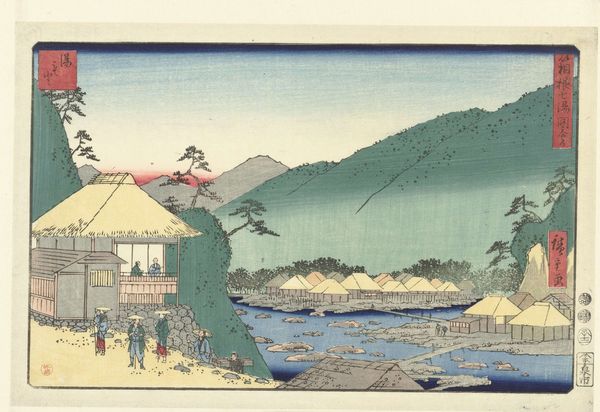
painting, print, watercolor, woodblock-print
#
painting
# print
#
asian-art
#
landscape
#
ukiyo-e
#
watercolor
#
woodblock-print
#
geometric
#
mountain
Dimensions: height 219 mm, width 344 mm
Copyright: Rijks Museum: Open Domain
Editor: This woodblock print, "Olifantenberg in de provincie Sanuki," was created by Utagawa Hiroshige in 1858. The perspective is really interesting; the mountain dominates the scene. How do you interpret this work in terms of its cultural context? Curator: This print offers a window into 19th-century Japan, a society undergoing significant change, pressured to open its doors to the West. The seemingly tranquil landscape, with the small figures dwarfed by the mountain, speaks to the complex relationship between humans and nature. It can be seen as a commentary on our place within larger power structures. Notice how the geometric lines of the mountain contrast with the soft curves of the trees; what does that say to you? Editor: Well, the geometry makes me think about control, about trying to organize the natural world. Is it a coincidence that it seems like there's no women in the picture? Is this a reflection of women's social mobility back then? Curator: That's a vital observation. In Ukiyo-e prints, the depiction of women was very controlled by the patriarchy. Although this particular scene centers on the landscape rather than individual figures, you have rightly noted a certain gendered absence. It raises interesting questions, doesn't it, about visibility, and who gets to occupy what space. And think about who these prints were for; How were they consumed, by whom, and what narratives were being supported? Editor: So, thinking about art this way pushes us to examine who is included and who is erased from the story. Thanks, I'll keep that in mind going forward! Curator: Exactly. Always ask, who benefits from this image, and whose voices are missing? It’s a crucial lens for understanding not just this artwork, but our own cultural landscape today.
Comments
No comments
Be the first to comment and join the conversation on the ultimate creative platform.
